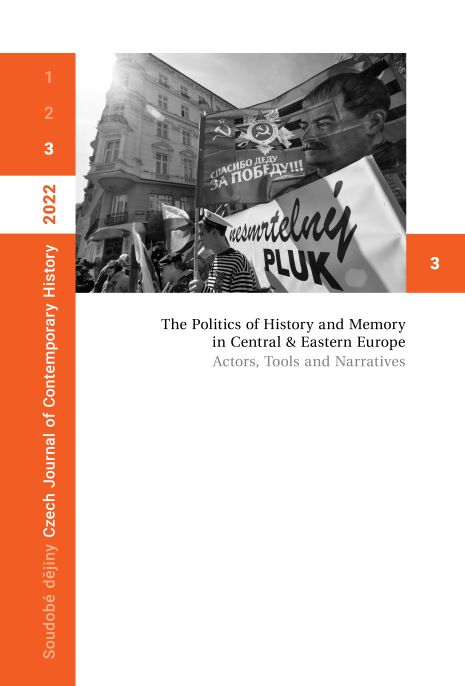
We kindly inform you that, as long as the subject affiliation of our 300.000+ articles is in progress, you might get unsufficient or no results on your third level or second level search. In this case, please broaden your search criteria.

The battlefield of linguistic policy in the 1920s to 1950s Soviet Union centred around two authoritarian figures: in Saint Petersburg the orientalist and active member of the Academy of Sciences Nikolai Marr, and in Moscow the dictator of the workers’ empire Joseph Stalin, an honorary member of the Academy of Sciences since 1939. Both spoke Georgian as their mother-tongue. Marr’s “new theory of language,” which was at times reminiscent of Medieval kabbalism (the descent of all languages from four original words, etc.), aspired to the status of the official linguistic doctrine of the Soviet Union between 1928 and 1950. Stalin initially gave it his endorsement. Marr explained the similarities between languages not through genetic relationships (language families), but by socioeconomic contact resulting in the intermingling or crossing of ethnic languages (“hybridization”), which gave rise to an explosion of new languages. The common features of languages derived also from the level of social development during which they emerged (the theory of stadialism). In Estonia, Marrism had an influence on linguistics in 1940–1941 (Marr’s ¬disciple Kristjan Kure played an important role in this) and particularly during the heyday of the Marrist campaign in 1948–1950. Professor Paul Ariste of the University of Tartu suffered the most: he was forced to publicly promote Marrism in 1949 and then denounce it in 1950. Secondary school textbooks discussed Marrism above all in the context of the historical evolution of the meaning of words. The second stage of the linguistic discourse of Stalinism began in 1950, when Stalin personally disproved Marrism, essentially re-establishing the tenets of historical-comparative linguistics. Unlike Marr, Stalin did not conceive of language as a property of the ruling class, but as a tool common to all the social strata within a nationality – a tool immune to rapid changes in the social order. Although everyone was now required to cite Stalin’s “brilliant linguistic ideas,” a more or less normal work climate had thus been restored in linguistics – unlike in literature and the arts. The historical metanarrative behind this debate was the antagonism between heredity and the environment. Both Marrism and the “agrobiological” theory of Trofim Lysenko that had come to dominate agricultural science since 1948 challenged the emphasis on the genetic component in the cultivation of plants and livestock as well as human culture, regarding it as a racist and colonial mysticism of heredity. Lysenko drew on Jean-Baptiste de Lamarck’s theory of evolution, which posited that the characteristics acquired by an organism during its lifetime and through the environment can be passed on to its offspring. This originally bourgeois notion was meant to contest the hereditary privilege of the nobility. The rejection of heredity carried over to the socialist ideology, which contrasted racial uniformity with proletarian solidarity resulting from the social division of labour. Both Marrism and Lysenkoism wanted to liberate the society from “the bondage of genes,” believing that physical and mental development can be guided by changing the environmental conditions. The fact that Stalin decided at one point to defend the hereditary traits of language instead can be explained in a number of ways, for example with the desire of an autocrat to remain unpredictable.
More...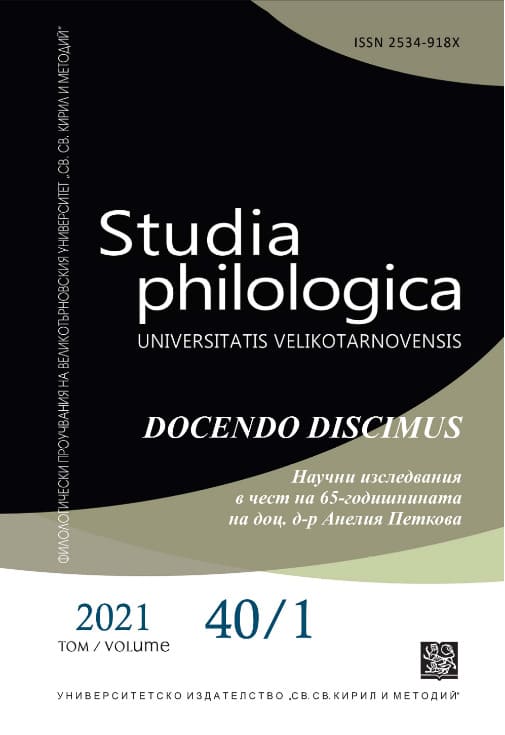
The purpose of the study is the onymy (oikonymy, ethnonymy, oronymy, toponymy, castelonymy, hydronymy, etc.) of the city of Bakhchisaray, located in the territory of the Crimean peninsula, which proves that for centuries there, lived many tribes and nations. Bulgarians who were deported in 1944 to distant parts of the former USSR moved to this territory during the Russo-Turkish wars in the 19th century, and in the 1990s began to return to Crimea. Today in Bakhchisaray our compatriots continue to live, as evidenced by some anthroponyms, eortonyms and others.
More...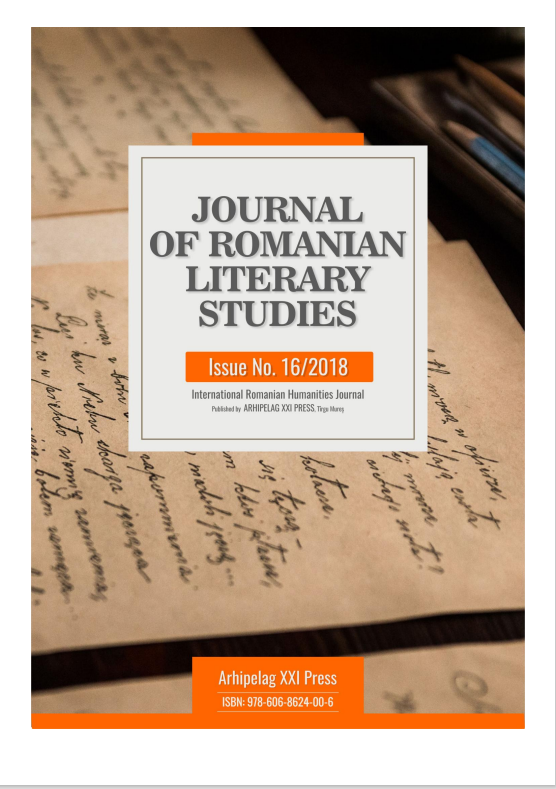
The Romanian literary history has always reflected on the significance of Transylvania in our literature, on this region’s contribution to the development of culture, as a whole. Among the people that have brilliantly illustrated the Transylvanian region in the interbelic and postbelic period, is the teacher, publicist, literary critic and historian, Ion Breazu. That is why, for those who have knowledge of Transylvania’s literary life it was worth the effort to make the emblematic figure of Ion Breazu well-known around the country. As one of Ion Breazu’s most faithful friends, well-known critic and inspiring animator of the Romanian magazine Gând românesc demonstrated, Ion Breazu’s educational background coincides with first signs of a literature affirmation in perfect agreement with what was written over the Carpatians. With no complexes, the period after the Great Union admits some strictly artistic concessions and the emergence of L.Rebreanu, P. Dan in prose, and L. Blaga in poetry justifies same other approaching methods, filtering extra-literary factors, promoting, in full knowledge, a severe, but perfectly informed literary criticism. The history of Transylvania and the destiny of the Romanians living in Transylvania, the realities uncovered after 1918, the organic liasons between the province ruled by the Hasburgs and then, later by the AustroHungarians dualism and Romania, the normal pulse of these relationships and also the interaction of values (the migration of Transylvanian scholars to Tara Romaneasca and Moldavia)generated a reality highlighted by spiritual features by the collective psychology and by programs under the emblem of the Romanian folk ethos and of values recepted from the country. ,,Transilvanias, the spirit of the Transylvanian” was a concept justified only by historical circumstances and by the conditien of being of the Romanians from Transilvania. Ion Breazu`s lesson invites everyone to a collective research and to the revelation of the processes of literature`s internal development. Above all things, beyond the specific data of a literary Transylvania, Ion Breazu pleads for a germinely Romanian approach, without fail.
More...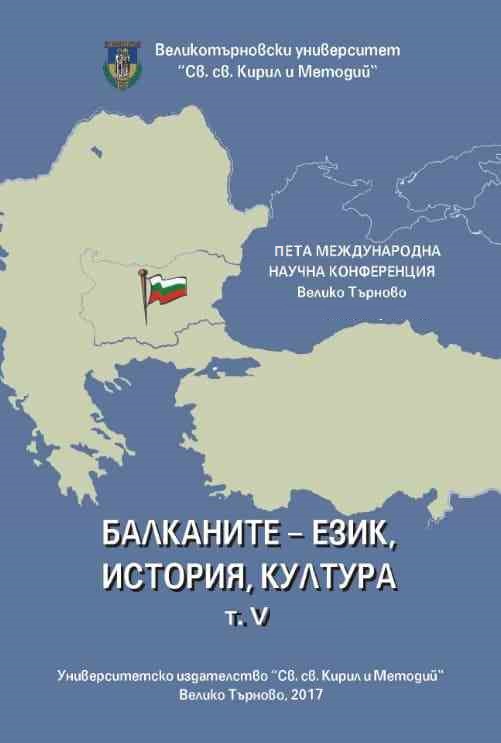
The article is an attempt to reveal the charity activity of the Bulgarian Orthodox Church in the Tarnovo diocese in the second half of the 1930s and the late 1940s. The chronological limits of the study are determined by the election of Znepolski bishop Sophronius for Metropolitan of Tarnovo in 1935 and the adoption of the Law of Religious Denominations in 1949, that put an end to charity activity of the Bulgarian Orthodox Church. The article clarifies the relationship between the state and the Church in the sphere of charity activity before and after September 9, 1944.
More...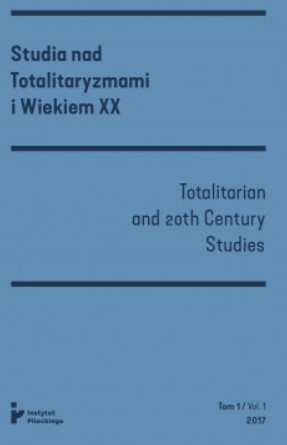
W okresie hiszpańskiej wojny domowej zwycięski rząd gen. Francisca Franco nawiązał bliską współpracę polityczną i wojskową z nazistowskimi Niemcami w celu zwalczania wpływów środowisk komunistycznych. Rozszerzeniem tego sojuszu miało być podjęcie i aktywne rozwijanie współpracy na polu nauki i kultury, dlatego opracowano wówczas projekt hiszpańsko-niemieckiego porozumienia. Treść dokumentu poważnie zaniepokoiła jednak hiszpańskich konserwatystów i katolicką hierarchię. Porozumienie miało być ratyfikowane we wrześniu 1939 roku, ale w następstwie agresji Hitlera na Polskę rząd hiszpański odmówił jego podpisania. Jak się okazało, był to pierwszy krok ku stopniowemu osłabieniu więzi między Madrytem a Berlinem. Co więcej, sojusz Hitlera ze Stalinem (pakt Ribbentrop–Mołotow) oraz wspomniana już inwazja III Rzeszy na w przeważającej mierze katolicką Polskę skłoniły gabinet gen. Franco do nawiązania bliższych stosunków z mocarstwami anglosaskimi. Dla gen. Franco taki rozwój wydarzeń stał się decydującym argumentem przeciw angażowaniu Hiszpanii w II wojnę światową, co miało wpływ na ostateczny wynik konfliktu.
More...
W latach 1939–1940 Hiszpania i Polska znajdowały się na przeciwnych biegunach geograficznych ambicji III Rzeszy. W Niemczech zakończenie w 1939 roku hiszpańskiej wojny domowej zwycięstwem wspieranego przez nazistów reżimu gen. Francisca Franco przyniosło nadzieje na gospodarczą i militarną współpracę przeciwko mocarstwom zachodnim, mimo że ostatecznie Hitler doznał zawodu na obu tych polach. Na Wschodzie Polska była najbardziej konsekwentnym przeciwnikiem niemieckiego ekspansjonizmu dyplomatycznego i militarnego, chociaż alianci zachodni i Związek Sowiecki chętnie układali się z Hitlerem, by uniknąć wojny. Mimo różnic Hiszpania i Polska miały wiele punktów wspólnych, m.in. katolicyzm, rosnące rozczarowanie zachodnimi mocarstwami i głęboką nieufność wobec sowieckiego komunizmu, którą podzielały liczne partie i frakcje, w tym nawet hiszpańscy republikanie, będący cały czas w opozycji do gen. Franco. Artykuł jest poświęcony reakcji hiszpańskich i polskich przywódców na wybuch II wojny światowej, a także podjętym przez nich próbom określenia i umocnienia punktów stycznych między Hiszpanią a Polską – nawet jeśli sympatyzowanie Hiszpanów z Polakami mogło zagrażać relacjom z Niemcami. Do artykułu wykorzystano głównie źródła hiszpańskie.
More...
Celem powstania tego tekstu jest ukazanie obrazu wojny i nowego porządku w Europie prezentowanego w wybranych artykułach ze słowackiej prasy. W momencie wybuchu wojny Słowacja była młodym, autorytarnym państwem, które jeszcze budowało swoją politykę wewnętrzną i zewnętrzną. Wojna stanowiła nowy początek, który mógł zostać odpowiednio wykorzystany przez słowacką propagandę, co też się stało. Słowacja była de facto miejscem relatywnego spokoju w czasach wojennych niepokojów, co również wpływało na możliwości działania propagandy w prasie. Sytuacja względnego spokoju mogła być potwierdzeniem słuszności drogi obranej przez słowackie władze. Artykuł ukazuje także wizerunek Niemców oraz Adolfa Hitlera przedstawiany w słowackiej prasie, rywalizację między nazistowskim a konserwatywnym skrzydłem w łonie Słowackiej Partii Ludowej Hlinki, jak również sam obraz narodowego socjalizmu prezentowany na jej łamach. W charakterze źródeł wykorzystano słowackie gazety („Slovák”, „Slovák Pondelník” i „Gardista”). Doświadczenie wojenne Słowaków jest odmienne niż Polaków i wielu innych europejskich narodów, wobec czego temat ten jest zupełnie wyjątkowy i pozostawia wiele przestrzeni do dalszych badań.
More...
Wbrew temu, czego można by się spodziewać, dotychczas w badaniach historycznych nie poświęcono zbyt wiele uwagi aktywności zagranicznych korespondentów akredytowanych w Berlinie w okresie istnienia III Rzeszy. W centrum zainteresowania znajdowała się „druga strona dziennikarstwa”, czyli relacje państwo–społeczeństwo oraz aparat propagandy nazistowskich Niemiec i jego czołowe postacie, jak np. Joseph Goebbels. Jest to szczególnie zastanawiające, gdyż zagraniczni dziennikarze pracujący w Berlinie w znacznej mierze kształtowali postrzeganie narodowosocjalistycznych Niemiec na arenie międzynarodowej i istotnie przyczynili się do poszerzenia wiedzy o nich na całym świecie. Co więcej, mało kto dziś pamięta, że na początku II wojny światowej amerykańscy reporterzy towarzyszyli jednostkom wszystkich stron konfliktu, ponieważ Stany Zjednoczone pozostawały neutralne aż do grudnia 1941 roku. Artykuł prezentuje czołowych amerykańskich dziennikarzy pracujących w Berlinie – Louisa Lochnera (AP), Williama Shirera (CBS) i Sigrida Schultza („Chicago Tribune”) – którzy przez jakiś czas towarzyszyli oddziałom Wehrmachtu lub mieli możliwość na przełomie 1939 i 1940 roku pojechania do Polski pod nadzorem Niemców. Jak wyglądała ich praca? Co opisywali (a co pomijali) w swoich reportażach? Jaki wpływ ich teksty wywarły na północnoamerykańską i międzynarodową opinię publiczną? Wreszcie, w jakim stopniu wizyty organizowane przez niemieckie ministerstwo propagandy kształtowały ich audycje radiowe i artykuły? W nawiązaniu do mojego odkrycia archiwalnego z 2017 roku, które dotyczyło tajnej współpracy Associated Press z nazistowskimi Niemcami w latach 1942–1945, część artykułu będzie poświęcona amerykańskiemu dziennikarstwu fotograficznemu z lat 1939–1940.
More...
Artykuł zajmuje się represjami niemieckimi wymierzonymi w duchowieństwo Kościoła katolickiego w okupowanej Warszawie w latach 1939–1940. Jego bazą źródłową są zeznania ofiar i świadków nazistowskiego terroru, które po wojnie zgromadziła Główna Komisja Badania Zbrodni Niemieckich w Polsce. Tekst przedstawia różnorodne aspekty stosowanej przemocy, zarówno natury fizycznej, jak i administracyjnej: od ograniczenia swobody kultu religijnego, przez aresztowania, tortury, zsyłki do obozów koncentracyjnych, po egzekucje. Autor próbuje znaleźć odpowiedź na pytanie, co było głównym motywem prześladowań duchowieństwa: wyznawanie wiary katolickiej czy raczej przynależność narodowa. Celem analiz będzie ukazanie niezwykle zawiłych przyczyn represji wobec duchownych, którzy byli zarazem kapłanami, Polakami i członkami elity narodowej. Prześladowania duchowieństwa zostaną zaprezentowane na tle ogólnych represji niemieckich w Warszawie i Generalnym Gubernatorstwie, aby zastanowić się, czy księża stanowili jakiś swoisty przypadek, czy te działania okupanta były częścią szerszych zbrodniczych planów.
More...
During the Spanish Civil War, the victorious government of Francisco Franco established close political and military co-operation with Nazi Germany with the objective of combatting Communist influence. This alliance was to be furthered by the establishment and active development of cultural and scientific collaboration between the two countries, and a Spanish-German cultural agreement was elaborated for this specific purpose. However, the draft of the document caused great anxiety amongst Spanish conservatives and the Catholic hierarchy. The agreement was due to have been ratified in September 1939, but following Hitler’s aggression against Poland the Spanish government refused. This proved to be the first step towards a gradual weakening of ties between Madrid and Berlin, and indeed towards Hitler’s alliance with Stalin (the Molotov–Ribbentrop Pact); ultimately, the Third Reich’s invasion of predominantly Catholic Poland caused General Franco’s cabinet to establish closer relations with the Anglo-Saxon powers. For Franco, these developments became a decisive argument against involving Spain in the Second World War, which fact was of importance for the final result of the conflict.
More...
In Continental Europe, Spain and Poland were at the geographic extremes of the ambitions of the Third Reich in 1939 and 1940. To Germany, the end of the Spanish Civil War in 1939 with the Nazi-supported victory of the regime of General Francisco Franco brought with it expectations of trade and military collaboration against the Western powers, even if Hitler would later be frustrated in both these areas. In the East, Poland was the most consistent opponent of German diplomatic and military expansionism, even though the Western Allies and the Soviet Union were all eager to make deals with Hitler to avoid war. Despite these differences, Spain and Poland did share a number of common elements, including Catholicism, rising disenchantment with the Western powers, and a deep mistrust of Soviet Communism, the latter belief held across multiple parties and sectors, even including Spanish Republicans opposed to Franco. Using primarily Spanish records, this paper will examine the reaction of Spanish and Polish leaders to the outbreak of the Second World War, and also their attempts at identifying and developing common ground between Spain and Poland – even if for Spain an expression of sympathy for the plight of the Poles could have jeopardized relations with Germany.
More...
The aim of the present article is to take a closer look at the war and the new European order as depicted in selected articles from Slovak press. On the outbreak of the Second World War, Slovakia was a young authoritarian state, which was still in the process of developing its internal and foreign policies. The war was a new beginning, which could be, and indeed was, taken advantage of by Slovak propaganda. Slovakia was effectively a place of relative stability in times of war trouble, which also affected how press propaganda operated. Relative peace could serve to validate the political choices of Slovak authorities. The article also analyzes the depictions of the Germans and Adolf Hitler in Slovak press, the rivalry between the Nazi and conservative wings in the Hlinka’s Slovak People’s Party, as well as the narrative about national socialism as appearing in press articles. My sources are selected Slovak papers (“Slovák”, “Slovák Pondelník”, and “Gardista”). The Slovaks experienced the war in different fashion than the Poles and many other European nations did, which makes this subject unique and means that it lends itself to extensive further study.
More...
Contrary to what could be expected, relatively little attention has been given in historical research to the actions of foreign correspondents accredited in Berlin during the Third Reich. The focus has been on “the other side of journalism,” that is on the relations between the state and the people, as well as on Nazi Germany’s propaganda apparatus and its leading figures, such as Joseph Goebbels. This is particularly thought-provoking, as the foreign journalists working in Berlin made a major contribution to shaping the international perception of Nazi Germany and increasing global awareness of its nature and actions. What is more, it is largely forgotten these days that at the beginning of the Second World War, American reporters followed military units of all belligerents, since the United States was a neutral country up until December 1941. The article presents the top American journalists working in Berlin – Louis Lochner (AP), William Shirer (CBS) and Otto Tolischus (“New York Times”) – who for some time accompanied Wehrmacht units or had the opportunity of coming to Poland towards the end of 1939 or at the beginning of 1940, under German supervision. What did their work look like? What did they include in (and omit from) their reports? What impact did their texts have on the North American and international public? Finally, to what extent were their radio broadcasts and articles shaped by the trips arranged for them by the German Ministry of Propaganda? In the context of my 2017 archival discovery concerning the secret co-operation between the Associated Press and Nazi Germany in the years 1942–1945, part of the article will be devoted to American photographic journalism of 1939–1940.
More...
The present article concerns German repressions against the clergy of the Catholic Church in occupied Warsaw in the years 1939–1940. Its source base is formed from the testimonies of victims and witnesses of Nazi terror, collected after the war by the Main Commission for the Investigation of German Crimes in Poland. The text presents a variety of aspects relative to the violence, both physical and administrative, employed by the occupying forces, including restriction of religious freedoms, arrest, torture, transport to concentration camps, and execution. The author strives to identify whether the central motive for the persecution of the clergy was based on adherence to the Catholic faith or rather on nationality. The intention herein is to present the extremely complicated reasons for the repressions against the clergy, who were at once priests, Poles, and members of the national elite. The persecution of the clergy is presented in the more general context of German repressions in Warsaw and the General Government in order to facilitate consideration whether the clergy were a special case, or whether the occupier’s actions were part of a broader criminal plan.
More...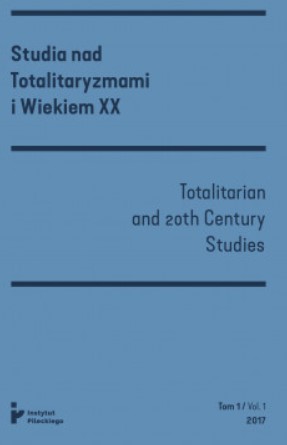
From the very beginning of the invasion of Poland in September 1939, the Germans conducted mass murders of Polish civilians in the entire country, however their scale differed in individual of the occupied regions. The greatest crimes were perpetrated in the pre-war Pomeranian Voivodeship, where approx. 30,000 people were murdered. The German terror did not assume such proportions in any other region of annexed Poland. These atrocities targeted mainly the Polish intelligentsia, but also farmers and workers. A thousand patients of psychiatric hospitals and hundreds of Pomeranian Jews were executed and buried in the same death pits. Apart from the Einsatzgruppen units, members of the German minority – the activists of the Selbstschutz Westpreussen – also played a special role in this crime. They were particularly exposed to and receptive of the Nazi ideology due to the German propaganda concerning the so-called Pomeranian corridor and the Bloody Sunday in Bydgoszcz. The planned extermination campaign, which Rafał Lemkin believed to be the first physical genocide of the war, was portrayed as an act of self-defense and retaliation for the death of the Volksdeutschers. In order to emphasize the importance of the events that unfolded in Gdańsk Pomerania in 1939 as the onset of the genocidal German occupation policy, a new historical concept was introduced: “the Pomeranian crime of 1939.”
More...
During an address to the House of Commons on 31 March 1939, Arthur Neville Chamberlain, the British Prime Minister, gave a guarantee to Poland. Today, there is no doubt that the United Kingdom guaranteed only the independence of the Polish Republic and not its territorial integrity, thereby enabling the possibility of a peaceful settlement of the German-Polish dispute over Gdańsk and the so-called Danzig Corridor. This guarantee was a turning point in relations between Warsaw and London, leading to direct political co-operation between both states in the months leading up to the outbreak of the Second World War.
More...
The main aim of this article is to highlight the importance of the Polish Promethean campaign in the late period of the Second Polish Republic. From the historiographic point of view, the issue of when exactly Polish Prometheanism came to an end remains a subject of debate. The proposed periodization focuses on 1932 – the year that Poland and the Soviet Union signed a non-aggression treaty; or 1935 – the death of Józef Piłsudski. And yet the most obvious date that sounded the knell of Prometheanism seems to be September 1939 – the German attack on Poland. After the Soviet attack of 17 September 1939, the Polish government had to flee the country. Conditions for promoting the Promethean idea visibly improved in 1939–1940, and that is precisely what makes Polish government policy towards the Soviet Union during the period from 1935 to 1940 so interesting.
More...
Brytyjski premier Arthur Neville Chamberlain 31 marca 1939 roku podczas wystąpienia w Izbie Gmin udzielił Polsce deklaracji gwarancyjnej. Nie ulega już dzisiaj wątpliwości, że Zjednoczone Królestwo nie gwarantowało integralności terytorialnej Rzeczypospolitej, lecz wyłącznie jej niepodległość – co otwierało drogę do pokojowego rozwiązania niemiecko-polskiego sporu o Gdańsk i tzw. korytarz. Deklaracja gwarancyjna przyniosła przełom w stosunkach na linii Warszawa–Londyn, doprowadzając do bezpośredniej politycznej współpracy między obu państwami na kilka miesięcy przed wybuchem II wojny światowej.
More...
Nadrzędnym celem artykułu jest uświadomienie znaczenia kampanii polskiej dla realizacji idei prometejskiej w upadającej II Rzeczypospolitej. Z punktu widzenia historiografii kwestią dyskusyjną nadal pozostaje data zmierzchu polskiego prometeizmu. Proponowana periodyzacja dotyczy na przykład roku 1932 – daty paktu o nieagresji między Polską a ZSRS – lub 1935 – daty śmierci Józefa Piłsudskiego. Najbardziej jednak oczywistym terminem wydaje się wrzesień 1939 roku, czyli data inwazji III Rzeszy na Polskę. Po ataku ZSRS 17 września 1939 roku władze Polski były zmuszone opuścić terytorium państwa. Uwarunkowania sprzyjające szerzeniu idei prometejskiej wyraźnie poprawiły się w latach 1939–1940, dlatego właśnie ogląd polityki polskich władz wobec Związku Sowieckiego w okresie 1935–1940 jest tak interesujący.
More...